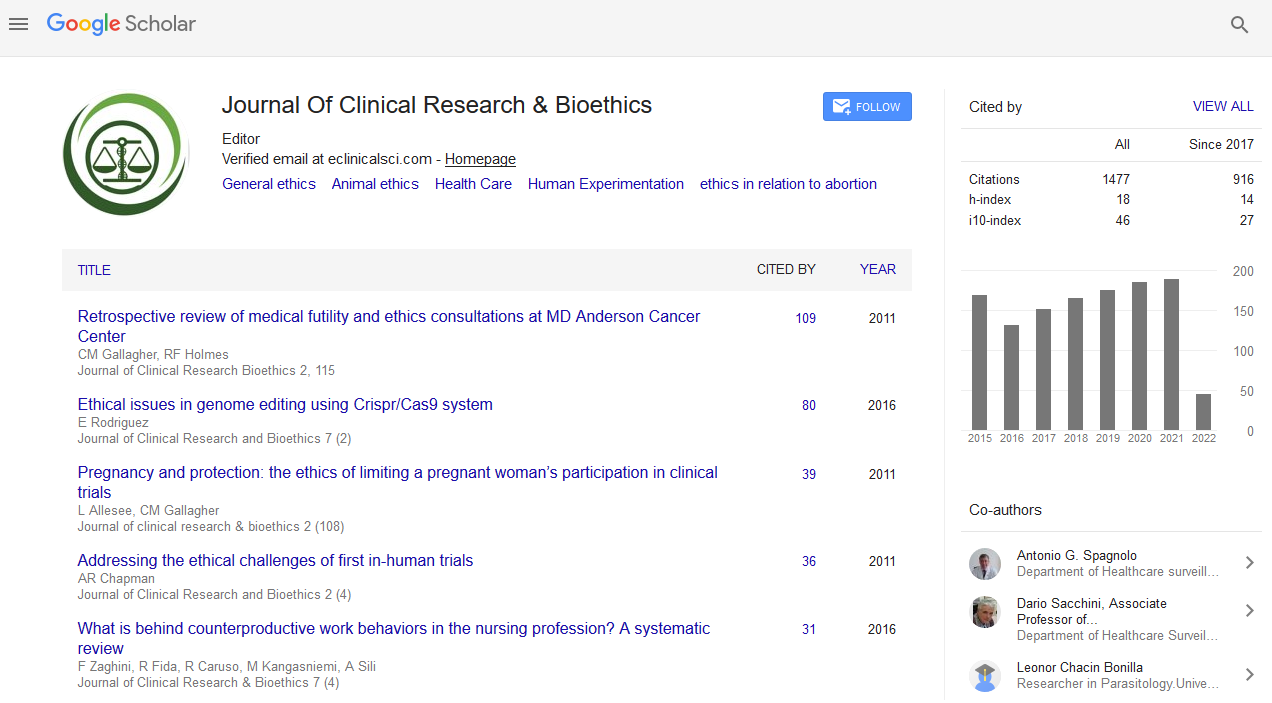PMC/PubMed Indexed Articles
Indexed In
- Open J Gate
- Genamics JournalSeek
- JournalTOCs
- RefSeek
- Hamdard University
- EBSCO A-Z
- OCLC- WorldCat
- Publons
- Geneva Foundation for Medical Education and Research
- Google Scholar
Useful Links
Share This Page
Journal Flyer

Open Access Journals
- Agri and Aquaculture
- Biochemistry
- Bioinformatics & Systems Biology
- Business & Management
- Chemistry
- Clinical Sciences
- Engineering
- Food & Nutrition
- General Science
- Genetics & Molecular Biology
- Immunology & Microbiology
- Medical Sciences
- Neuroscience & Psychology
- Nursing & Health Care
- Pharmaceutical Sciences
Abstract
Effect of Nebulized 3% Hypertonic Saline on Intensive Care Unit Admission Rates of Infants with Moderate Acute Bronchiolitis
Jose Carlos Flores-González, Patricia Rodríguez-Campoy, Juan Pérez-Guerrero, Belén Serrano-Moyano, Encarnación Palma-Zambrana, Paloma Comino-Vázquez, Gema Jiménez González and Alfonso M Lechuga-Sancho
Objectives: To investigate whether the use of nebulized 3% hypertonic saline in infants hospitalized for acute bronchiolitis reduces their rate of pediatric intensive care unit (PICU) admission, the mean length of PICU stay and total hospital stay.
Methods: Cross-sectional study including 626 infants hospitalized for moderate acute bronchiolitis comparing a group receiving nebulized 3% hypertonic saline (HS group) between September 2011 and May 2014 (n=320), with a historic control group treated with normal saline (NS group) between September 2007 and May 2010 (n=306) independently of the concomitant use of bronchodilators.
Results: Overall hospital stay including days at PICU, was significantly reduced in HS group (4 days (0-46) vs 5 days (1-73); p<0.0001). However, we did not find a significant reduction in PICU admission rate in the HS group (p=0.115), neither in the length of stay (LOS) in PICU (5 days (1-30) vs 6 days (1-26); p=0.402). Half as many admission were observed in patients with risk factors of severe disease in HS group (6.5% of those with risk factors vs 3.1% of those without risk factors), although this failure to find a difference (p=0.136).
Conclusions: Treatment with nebulized 3% hypertonic saline was not accompanied by a reduction in PICU admission. There was no difference in PICU length of stay in infants with acute bronchiolitis, and admission rates in infants with risk factors for serious bronchiolitis; it was also associated with a significantly shorter mean hospital stay.


